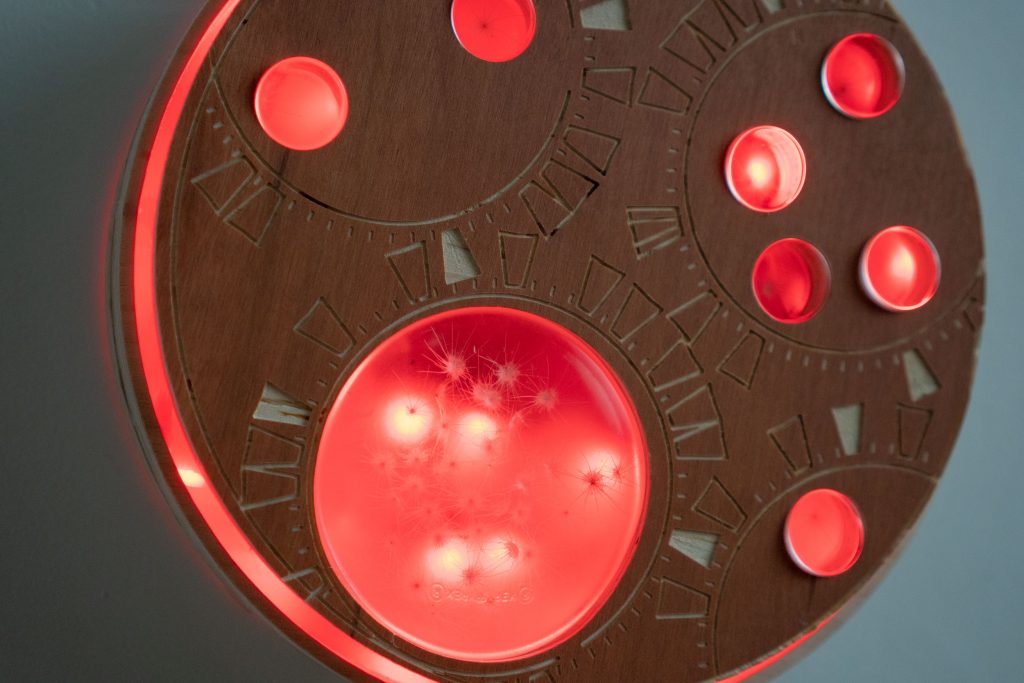allochronic cycles_old

Allochronic Cycles pairs posthuman intelligence with prehuman, ecologically rooted thinking. For us to move forward, we look backwards across millennia, seeking an AI that comprehends timescales in a way that humans cannot. In response to human asynchronicity, Allochronic Cycles explores ecosystemic relationships through interrelated yet vastly different timescales. The connected kinetic artwork points to the asynchronicity of human and nonhuman cycles, with humanity on an evolutionary pathway unrelated to the rest of the living world—as if we existed in different geological eras: in allochronic cycles.

Both physically and conceptually, Allochronic Cycles presents contrasting, concentric circles of time. Allochronic references time according to different geological and biological divisions, where distinct times (epochs and their associated environments) delineate the spatial and temporal boundaries for creativity. In Allochronic Cycles, we create a kinetic representation of the synchronous and asynchronous time cycles of differently scaled systems, ranging from the broad development of the cosmos to the evolution of life on Earth to photosynthesis and plant processes and, finally, to the fast-paced life cycles of viruses such as COVID-19. Alongside the cycles linked to multiple time-based logics of an ecosystem, an artificial intelligence uses time forecasting to anticipate the impacts of the accelerated speed of modern human societies.
Documentation of Project Development
Cesar & Lois acknowledges
Dr. Camila Cunha and LGE (UNICAMP, Brazil) and Dr. Solon Morse and Coalesce Center for Biological Arts (University at Buffalo, NY): research;
CSUSM DaTA Lab students Jinxui Han and Zhiwei Li: research and visualization of time cycles; and student Victoria Rios: growth study of Arabidopsis
Allochronic Cycles was supported by a Trifecta: Art, Science Patron exhibition grant, a Coalesce Center for Biological Arts residency, CSUSM Professional Development Grant, and Grant 2018/24452-1, São Paulo Research Foundation (FAPESP).